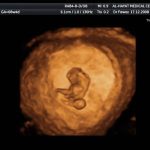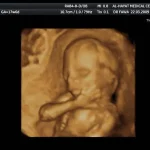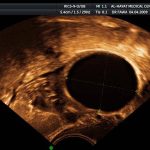Frequently asked questions on 3D/4D ultrasound device:
1- What do you mean by 3D? And what is 4D?
When we talk about 3D (3 dimensions) we mean the length, with and height. The fourth dimension is the time, which gives life to the objects. In 3D ultrasound machines, the operator has to spend the effort to get the 3rd dimension which requires a little more time; while in the 4D machines the 3rd dimension is automatically obtained by the machine itself in different but successive times giving life to the image.
2- What are the precautions before performing 3D/4D ultrasonography?
All you need is an appointment, but sometimes your bladder should be full, especially in women who prefer abdominal rather than vaginal examination. In this situation, you should drink 4 cups of water or juice and wait for a while before the examination.
3- Is it a safe examination? And how much time does it require?
Yes, it is, it is very safe and it requires 10-20 minutes.
4- When we consider the 3D/4D ultrasound examination very important?
This examination is recommended for all pregnant women but some of them need it more than others (advanced age, the previous baby with congenital anomalies, negative blood tests, family history of congenital anomalies, maternal exposure to teratogenic drugs or inhalation of toxic materials…. etc.).
5- What is the best time for 3D/4D ultrasound during pregnancy?
3D/4D ultrasound can be performed anytime and every visit during pregnancy. The minimum requirement is three examinations:
At 12-14 weeks: for detection of some malformations such as anencephaly, spina bifida, and malformations of the abdominal wall and extremities.
At 20-24 weeks: for searching in more details of the fetus and studying the internal organs and their functions, the most important of which is the heart.
At 30-34 weeks: for evaluation of fetal growth, fetal movements, and muscular coordination.
6- Does the 3D and 4D ultrasound scan substitute amniotic amniocentesis?
No, amniocentesis is useful in identifying problems in the structure of fetal cells (such as chromosomal abnormalities), while examination with a three-dimensional and four-dimensional ultrasound device reveals the largest problems at the level of the fetal organs themselves.
7- When is the best time to get the best images when scanning with 3D and 4D ultrasound?
It is possible to get great pictures of the fetus at all stages of pregnancy, and in general, the most beautiful pictures can be taken for the fetus between the 20 and 30 weeks of pregnancy.
8- Is there any guarantee to get good images as we can see on your website?
The image quality depends on many factors including the thickness of the abdominal wall of the pregnant woman, position of the fetus in the uterine cavity, gestational age, and amount of amniotic fluid around the fetus and, finally, experience of the sonographer. We can give a guarantee for the last factor only (experience).
9- Can I get the photos and DVD?
Yes, of course, just before leaving the clinic









